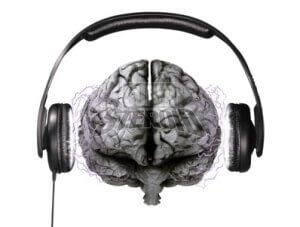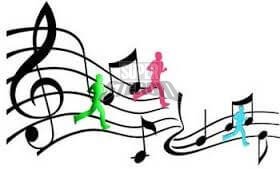What type of music to choose to accompany a sporting activity? all our advice and information to understand the benefits.
How does the brain perceive music and interpret it?

You should know that there is not a single music center in the brain. Let’s first discover the purely mechanical aspects that come into play when you listen to a beautiful melody. As the name suggests, it is the auditory cortex which plays the most important role in processing the sound of music. An integral part of the temporal lobe, the auditory cortex takes the information received in the ear and evaluates it, in terms of height - that is to say the frequency of vibrations - and volume of sound.
Besides the auditory cortex, other parts of the brain manage different aspects of music. Thus, we know that the rhythm is taken into account in a minor way by this organ. Perceiving simple and regular rhythmic notes, like tapping your fingers on a tempo of 1-2, involves the left frontal cortex, the left parietal cortex as well as the right cerebellum. The more unusual and richer rhythms involve other regions of the cerebral cortex and cerebellum.
In addition to this perception, the brain must interpret the sounds that reach it. This is the management of the tone. The tone is defined as the construction of a musical structure around a central frame.
To interpret the tone, the brain involves other parts as well. The prefrontal cortex, the cerebellum and many regions of the temporal lobe play a vital role in our ability to recognize the tone of any piece of music. It therefore appears that the perception and interpretation of music mobilize three of the four lobes of the human brain. These are the frontal, parietal and temporal lobes. Only the occipital lobe, in charge of visual processing, is not affected by this activity.
These elements are only the basic mechanical aspects, necessary for listening to music. Music has a deeper impact on the brain. We all know that a good song can trigger a cascade of side reactions, often unintentionally. An obvious example is our propensity to move with the tempo of a music. We are not yet talking about dance, which is an active and independent process, but simple movements that we sometimes do without even realizing it. This is the case when tapping your finger on something while listening to a song. This is caused by the stimulation of neurons in the motor cortex.
What does musical rhythm bring us in sport
For the majority of people, listening to music actually causes physiological reactions. Playful music, with a fast tempo and a high tone can make us breathe faster, while sad music, played in a slow and minor tempo can slow our pulse, even cause an increase in blood pressure.
Since we love repetition, our brains are constantly trying to predict what will happen next, based on a pattern like the beat of a song. This explains why we end up tapping our fingers or dancing while listening to a tune.
This ability of music to make us feel good also brings other benefits. Leading experts have shown that music can reduce pain. In addition, it can also improve our cognitive abilities. For those of us who listen to music while working out or playing sports, music can even improve endurance. This has been shown by several studies.
Just as silence doesn't help us to be better drivers or to be more creative, so it doesn't help much when we play sports. From 1911, Leonard ayres, an American researcher, was able to show that cyclists pedaled faster while listening to music than they did without music.
This is possible because listening to music helps to inhibit the signs of fatigue that the brain sends during exercise. sports. The moment our body realizes that we are tired and wants to stop exercising, it sends signals to the brain to ask it to stop and take a break. By listening to music, it competes with the body for the attention of our brain. This allows you to ignore these signs of fatigue. However, you have to be careful, as music is especially beneficial for low and moderate intensity activities. During very high intensity activity, music is not as powerful in gaining the attention of our brain. Music also allows you to train longer and harder. It can actually help us use our energy more efficiently.
What kind of music to listen to during sport
It is important to know how to choose your training playlist. You should know that there is a ceiling for music to be beneficial during sport. This ceiling is around 175 BPM (beats per minute). Any higher tempo does not seem to add more motivation. Here are some frequency levels for some music genres:
- the disco is at 120 BPM
- the pop is 110-140 BPM
- hiphop is also 110-140 BPM
- house music is 120-150 BPM
- the dubstep is at 140 BPM
- Rock (and its variants) is between 110 and 160 BPM
When practicing sport, it is rather recommended to combine different tempos. This provides better synchronization and allows us to find the right rhythm for our sporting activity.
For a calm sporting activity
- slow, count between 100 and 110 BPM
- moderate, count between 110 and 125 BPM
- fast, count between 125 and 135
For a more intense sports activity
- slow, count between 140 and 150 BPM
- moderate, count between 150 and 160 BPM
- fast, count between 160 and 175
Music makes us happy and brings more importance to the practice of sport. Just keep in mind that everyone is different. Listen to your body and everything should be fine.





